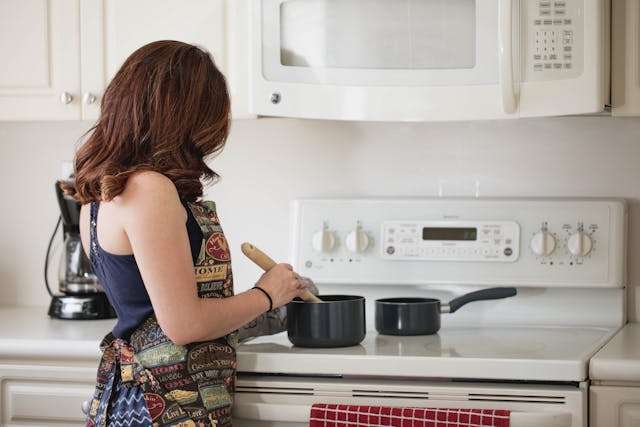Are Homemade Diets for Dogs Safe and Worth Trying?

More dog owners are adopting homemade diets, hoping to provide fresh, controlled pet meals. But with this trend comes a big question: are these diets safe or sound for dogs?
While homemade meals can have benefits, they also carry risks, like nutritional imbalances.
Owners need to understand what’s at stake before switching. If you’re curious about creating balanced recipes, check out Homemade Dog Meal Recipes: Healthy, Easy, And Delicious Options.
Table of Contents
Understanding Homemade Diets for Dogs
Homemade diets for dogs are becoming more popular as owners look for fresh, personalized alternatives to commercial kibble. With this trend, it’s vital to understand what goes into these meals. Are they nutritious? Do they meet your dog’s needs? Let’s explore.
What Constitutes a Homemade Dog Diet?
Homemade dog diets are meals crafted directly by pet owners. These meals often aim to replace commercially prepared food while providing wholesome, natural nutrition. At their core, a homemade dog diet should include:
- Protein: The cornerstone of a dog’s diet. This can include chicken, turkey, beef, or eggs.
- Carbohydrates: For energy, options like rice, oats, or sweet potatoes are standard.
- Fats: Healthy fats are essential for a shiny coat and overall health. Oils like fish oil or flaxseed oil work well.
- Vegetables: Nutrient-packed additions like carrots, green beans, and spinach are great choices.
- Vitamins & Minerals: Often overlooked but critical, supplements might be needed unless the meal is perfectly balanced.
Crafting such meals takes time and precision. Over- or underestimating any component could affect your dog’s long-term health.
Common Ingredients Used in Homemade Dog Meals
Homemade diets revolve around everyday foods. Here’s a look at popular ingredients and why they matter:
- Proteins:
- Ground turkey or chicken for lean protein.
- Eggs are a highly digestible source of nutrients.
- Carbohydrates:
- Brown rice for easy digestion.
- Sweet potatoes for a boost in fiber and vitamins.
- Vegetables:
- Carrots for beta-carotene and vitamin A.
- Green beans for a low-calorie filler.
- Fruits (used sparingly):
- Blueberries for antioxidants.
- Apples (without seeds) for fiber and vitamin C.
- Healthy Fats:
- Coconut oil aids digestion and keeps coats shiny.
- Omega-rich fish oils support brain and heart health.
If you’re new to creating meals, check out this Homemade Dog Food Recipe for guidance.
Types of Homemade Diets
Homemade diets aren’t one-size-fits-all. There are different approaches depending on a dog’s health and lifestyle:
Cooked Diets:
These diets involve cooking all ingredients. They are often easier to digest and safer for dogs at risk of foodborne illnesses. Proteins are cooked, veggies steamed, and all components well-blended for easy consumption.Raw Diets:
. Learn more about balancing raw diets from VCA Animal Hospitals using this resource:
Focused on raw meat, bones, and some raw vegetables. Advocates say raw diets are more natural, mirroring what a dog’s ancestors might have eaten. Caution is needed here—raw food carries contamination risks if incorrectly handled- Supplement-Enriched Diets:
Many owners include supplements to cover any nutritional gaps. These could be calcium powders to strengthen bones or vitamin-based mixes. Balance It is an excellentresource for finding supplements tailored to homemade diets.
With these different options, choosing a method that suits your lifestyle and your dog’s needs is more effortless.

Photo by Karsten Winegeart on Unsplash
If you’re exploring the benefits of switching to homemade meals, you might also like this read: Best Dog Food For Sensitive Stomachs.
Potential Benefits of Homemade Diets
Homemade diets for dogs have gained traction for good reason. By preparing meals at home, owners can ensure the quality of their dog’s food and cater to their unique needs. Let’s explain some significant benefits and why so many are switching to this approach.
Control Over Ingredients
When you prepare your dog’s food at home, you have complete control over what’s in their bowl. Unlike store-bought options, which may include preservatives, artificial flavors, or low-quality fillers, homemade meals allow you to select high-quality, fresh ingredients. You know precisely what your dog is consuming—no hidden surprises.
For example, you can choose lean proteins like chicken or turkey, healthy carbs like sweet potatoes, and nutrient-rich vegetables like carrots or spinach. This ensures your dog’s food is nutritious and free of unnecessary additives. Are you concerned about ingredient quality in commercial products? For inspiration, check out Homemade Dog Food: Healthy, Easy, and Delicious Options.
Customization for Specific Needs
Every dog is different; some have specific dietary restrictions or health conditions. One of the most significant advantages of homemade diets is the ability to tailor meals to your dog’s needs.
- Dogs with food allergies can avoid triggers like wheat or specific proteins.
- Overweight pets can enjoy portion-controlled, low-fat meals.
- Older dogs or those with medical issues may need softer foods or extra supplements.
This level of customization isn’t always possible with off-the-shelf options. Whether your pup has digestive sensitivities or specific nutrient requirements, a personalized meal plan ensures they get exactly what they need. Many owners with specialized diets for their pets swear by this approach, as discussed in the AKC’s guide on homemade dog food benefits.
Improved Digestive Health
Digestive issues are common in dogs, with symptoms ranging from bloating to inconsistent stools. However, switching to a homemade diet can often alleviate these problems.
Eliminating hard-to-digest fillers like corn or soy, found in many commercial foods, gives your dog’s digestive system a break. Foods rich in natural fiber, such as pumpkin or brown rice, promote gut health and regularity. Plus, fewer additives mean fewer irritants for the stomach.
Some dog owners report noticeable improvements in their pets’ digestion within weeks of switching to fresh, home-prepped foods. If your furry friend has a sensitive stomach, you might find these dog food picks for sensitive stomachs helpful, too.
By crafting their meals at home, you’re not just serving food—you’re providing a solution tailored for their well-being.

Photo by Rarnie McCudden
For more science-backed insights into the benefits of cooking for your dog, visit this helpful resource.
With the ability to control ingredients, cater to specific dietary needs, and improve digestion, it’s no wonder many owners are opting for homemade diets.
Potential Risks of Homemade Diets
Homemade diets for dogs can feel like a labor of love, but they aren’t without challenges. If you’re considering making the switch, it’s crucial to understand the possible risks involved. While homemade meals can be nutritious, they can also lead to serious health concerns if not properly managed.
Nutritional Imbalance
One of the most significant risks of homemade diets is nutritional imbalance. Commercial dog foods are formulated to meet specific dietary needs, while homemade diets often fall short.
Dogs require a diet with precise amounts of essential nutrients like proteins, carbohydrates, fats, vitamins, and minerals. Missing even one key nutrient can lead to long-term health problems like:
- Calcium deficiency: Causes weak bones or fractures.
- Excess Vitamin A: This leads to joint pain and brittle bones.
- Low protein levels: Results in muscle wasting and reduced energy.
Balancing a dog’s diet isn’t as simple as feeding them various “good” ingredients. For example, feeding only meat and rice may supply protein and carbs but fail to deliver necessary calcium and fatty acids. Want to start with balanced recipes? Review this helpful guide for tailored dog diets.
Sometimes, errors in nutrient balance happen because pet owners rely on online recipes that haven’t been nutritionally vetted. To avoid problems, consult a vet or canine nutritionist before introducing any homemade diet.
Toxic Ingredients to Avoid
Homemade meals can unknowingly include dangerous ingredients that are toxic to dogs. While delicious to humans, some foods can harm or even kill dogs. Familiarity with these items is a must:
- Chocolate and cocoa: Cause heart issues and seizures.
- Xylitol: Found in sugar-free gum, deadly in small amounts.
- Onions and garlic: Damage red blood cells, leading to anemia.
- Grapes and raisins Can cause kidney failure.
- Avocado: Contains persin, which is toxic in large quantities to dogs.
Even small quantities of these foods can be harmful. Dogs process food differently than humans, so what’s healthy for us might be dangerous for them. Learn more about food safety in this resource on homemade dog feeding dos and don’ts.

Photo by Jessica Lewis ????
Even items like raw or undercooked foods require caution. Parasites and bacteria like Salmonella or E. coli can pose a risk to both pets and humans if meals are improperly prepared.
Increased Preparation Time and Cost
Homemade diets aren’t just a dietary change but a lifestyle commitment.
Take a look at the factors involved:
- Time-consuming: Preparing balanced meals daily requires planning, cooking, and measuring.
- Costly ingredients: High-quality meats, fresh veggies, and supplements can be expensive.
For busy individuals, the additional preparation time can quickly become overwhelming. One misstep in meal prep—like forgetting supplements—can undo the benefits of homemade feeding. If you find that you’re skipping steps, it could ultimately harm your dog’s health rather than help it.
Still curious if DIY diets are worth it? You can compare the pros and cons by reading this piece on homemade dog food and tailored options.
Switching to homemade meals may seem like a great way to enhance your dog’s well-being, but understanding these risks is vital. Dogs rely on us for their health, so approaching any diet change with preparation and good advice is crucial.
Consulting with Professionals
Switching your dog’s diet to a homemade plan can feel rewarding. But did you know that even minor errors can impact your furry friend’s health? That’s where consulting professionals, like veterinarians or pet nutritionists, become essential. Let’s explain why professional guidance is invaluable and explore situations where homemade diets may genuinely shine.
Importance of Veterinary Guidance
Before diving into preparing meals for your dog, talking to a veterinarian is crucial. Why? A veterinarian understands your dog’s unique needs better than anyone else. From age to breed to pre-existing health conditions, they can help you determine what’s best nutritionally for your pup.
- Nutritional Gaps: Homemade diets are tricky to balance. A vet can spot missing nutrients and recommend supplements.
- Health Monitoring: They track how dietary changes affect your dog’s overall well-being, ensuring long-term safety.
- Avoiding Risks: Some common ingredients, like garlic or chocolate, are toxic to dogs. Consulting with a vet helps you create meals that avoid these pitfalls.
If you’re unsure whether your homemade diet idea measures up, a quick vet visit can save you from costly mistakes. This guide highlights why veterinary advice is necessary if you switch diets: Importance of Veterinary Diet Consultation.

Photo by Tima Miroshnichenko
When to Consider a Homemade Diet
Homemade diets aren’t for every dog or situation, but there are precise moments when they can work wonders. Here are scenarios where they might be beneficial:
Food Intolerances or Allergies
If your dog reacts negatively to commercial food, creating a controlled diet helps exclude irritants like wheat or soy. Medical ConditionsDogs with kidney issues, gastrointestinal concerns, or obesity often benefit from concrete meal plans crafted just for them.
Pet Preference
Got a picky eater who turns their nose up at kibble? Homemade meals might win them over. Learn more about feeding choosy dogs here: Best Dog Food for Picky Eaters
* Age and StageOlder dogs or puppies might need higher protein intake or softer meals,which can be tailored at home.
Ethical or Environmental Concerns
Some owners prefer homemade meals to avoid preservatives or meet ethical sourcing goals.
Tailoring their food to fit their specific condition or preference ensures not just satisfaction but also better health results for your pup. Wondering if you’re on the right track? Check out why talking to an expert matters: Consult Veterinarians for Dog Diets.
Taking the time to involve a professional isn’t just about avoiding mistakes—it’s about providing your dog with a healthier, happier life. In cases where homemade feeding isn’t feasible, veterinarians can also recommend alternatives or hybrid approaches.
Real-Life Experiences and Testimonials
Switching a dog to a homemade diet is a personal journey filled with hope, learning, and sometimes challenges. Let’s explore the highs and lows shared by pet parents who’ve been there.
Success Stories
Many dog owners rave about the transformations they’ve seen in their furry friends after switching to homemade diets. These stories demonstrate not only the potential benefits but also the personal connection this approach can strengthen between owner and dog:
Charlie’s Triumph Over Allergies
Charlie, a Labrador from Chicago, battled severe skin allergies for years. His owner, Mary, switched to a homemade diet with hypoallergenic ingredients like turkey and sweet potatoes. Charlie’s itchiness improved within weeks, and his coat regained its shine. Full of energy and allergy-free, he’s now thriving.Bella’s Weight Loss Journey
Bella, a Beagle who struggled with obesity, shed pounds thanks to custom low-fat, portion-controlled meals prepared by her owner. Incorporating carrots, lean chicken, and green beans helped Bella achieve a healthy weight while staying full and satisfied.Max’s Digestive Healing
Max, a ten-year-old Terrier, had chronic digestive issues. His owner turned to easy-to-digest homemade recipes using boiled chicken, rice, and pumpkin. After a month, his stools became regular, and his energy levels soared.
For more inspiring accounts of how homemade diets can change dogs’ lives, check out Dogs Thriving on Homemade, Health-Focused Diets.
Challenges Faced
Of course, transitioning to a homemade diet isn’t without its hurdles. Some owners face moments of doubt or difficulty, but their perseverance highlights what to expect:
Time-Consuming Preparations
Crafting meals at home can be a marathon rather than a sprint. Owners like Sarah, who works full-time, admit, “I underestimated how much effort goes into planning and cooking, especially balancing nutrients.”Cost Concerns
Homemade meals often include high-quality, fresh foods, which can be costly. Many dog parents, like Jeff in New York, noticed their grocery bills jumped significantly compared to buying kibble.Nutritional Balancing Act
Many pet owners find it overwhelming to ensure their dogs get the right mix of vitamins, proteins, and carbs. Recipes that look simple online might miss key nutrients. Consult experts or resources like Dog Testimonials for advice.Pickiness in Dogs
Switching diets can lead to some furry critics turning their noses up. Emily, an owner from Denver, recalls how her picky Dachshund refused homemade meals until she added a drizzle of fish oil for flavor.
For those navigating similar concerns, here’s some honest advice on overcoming hurdles shared on Realistic Homemade Dog Food Life.
Preparing homemade meals for dogs isn’t always easy, but the connection and visible benefits often outweigh the effort. Sometimes, it’s about trial and error and finding what works best for your pup.

Photo by MART PRODUCTION
Conclusion
Switching your dog to a homemade diet is a deeply personal choice, and while it offers undeniable potential benefits, it also demands care, attention, and education. Ensuring your dog gets the best nutrition starts with understanding the advantages and risks and forming a plan that suits their needs.
Explore more about how tailored meals can benefit certain breeds. Check out Best Dog Foods for Corgis in 2024 for ideas on custom ideas on customized options, checked options.
When considering homemade diets, it’s essential to consult with professionals. Nutritional imbalances or the inclusion of harmful ingredients could have long-term effects. Veterinarians can guide you toward balanced meal plans and suggest safe supplements, as emphasized in the Homemade Dog Food: Is It Healthy to Cook for Your Dog?
By making informed decisions, you’ll be better equipped to decide if homemade foods are the right choice for your pup—and how to do it safely. Don’t skip key steps; your dog’s health depends on it. Read Is Homemade Food Good or Bad for Your Dog?
FAQ About Homemade Diets for Dogs
Homemade diets for dogs often spark curiosity among dog owners. While customization and control over your pet’s meals sound appealing, many questions about safety, ingredients, and practicality exist. Below are answers to some of the most common questions pet owners ask.
Are Homemade Dog Diets Healthier Than Commercial Dog Food?
Homemade diets might feel healthier because you choose the ingredients, but that’s not always accurate. Commercial dog food is usually formulated by experts to meet a dog’s complete nutritional needs. On the other hand, homemade meals can fall short of key nutrients unless rigorously planned.
To learn how to ensure homemade diets meet nutritional requirements, check this insightful guide on Homemade Dog Food: Is It Healthy to Cook for Your Dog?
What Nutritional Supplements Are Needed for Homemade Diets?
Most homemade dog diets require supplements to fill nutritional gaps. Key nutrients often missing include:
- Calcium: To support bone health.
- Vitamins A and E: Found in specific oils or supplements.
- Omega-3 fatty acids: For joint and brain health.
- Taurine: Especially essential for particular breeds.
Without these additions, homemade meals can lead to deficiencies. To explore the balance of nutrients, visit Is Homemade Food Good or Bad for Your Dog?
What Are The Risks of Homemade Diets?
One significant risk is nutritional imbalance, which can cause long-term health issues like weak bones or organ problems. Another is the inclusion of toxic foods by mistake, such as onions, garlic, or chocolate. Handling raw ingredients improperly exposes dogs—and sometimes their owners—to bacteria like Salmonella.
Need more information about weighing the pros and cons? Check out Homemade vs. Store-Bought Pet Food: Which Should You Choose?
Are Raw Diets Included in Homemade Feeding?
Yes, raw diets are often considered a type of homemade feeding. They include raw meat, bones, and sometimes raw vegetables. However, raw diets carry risks like bacterial contamination and should be prepared under strict guidelines.
Are you looking for expert advice on raw feeding? Visit Dog Breed Guide: Find Your Perfect Companion for further insights.
How Do You Transition Dogs to Homemade Diets?
Switching to homemade diets should be done gradually. Abrupt changes can upset your dog’s stomach. Start by mixing small amounts of the homemade food into their regular meals, increasing the ratio over a week or two. Monitor for any digestive issues or changes in energy levels.
Professional guidance can be helpful to ensure a smooth transition. Learn more at Homemade Dog Food: What to Include & What to Avoid.
Is Homemade Food Suitable for All Dogs?
Not all dogs benefit from a homemade diet. Puppies, pregnant dogs, and those with chronic health conditions may have specific nutritional needs better met with commercial formulas or tailored options from a vet.
For instance, breeds with unique dietary requirements, like Poodles or Newfoundlands, might need specialized advice. Explore more about breed-specific needs in The Ultimate Guide To Poodles.
Can Homemade Diets Be Cost-Effective?
Homemade meals can sometimes be more affordable if you source ingredients in bulk, though this depends on the recipe’s complexity and your dog’s size. However, the time and effort required can outweigh any cost savings.
Are you curious about managing costs with homemade diets? Learn about other owners’ experiences and tips on Reddit discussions on homemade diets.
What’s the Best Way to Learn About Homemade Feeding?
The best way is by consulting a veterinarian or pet nutritionist. They can guide you on balancing the diet, adding supplements, and avoiding toxic ingredients. Online recipes should always be verified for nutritional completeness.
This helpful Cooking for Your Dog: Dos and Don’ts resource can also provide additional safety tips.

Photo by
These FAQs aim to clear up common concerns and help you make informed decisions about your dog’s diet.
Conclusion
Homemade diets for dogs can be an excellent way to take control of your pet’s nutrition, but they require careful planning. The benefits are clear: more customization, higher ingredient quality, and addressing specific health needs. However, the risks, such as nutritional imbalances and preparation challenges, are accurate.
For safer transitions, consulting a veterinarian ensures your dog gets what they need without missing essential nutrients. You can also explore tailored guides, such as Best Dog Food For Sporting Breeds, for options that may suit an active pet’s lifestyle.
The right balance in homemade feeding is achievable with the proper knowledge and support. Your effort can lead to happier, healthier meals for your furry companion—and that makes all the difference. Ready to start? Learn more from Nutrition Tips to guide you further.







One Comment